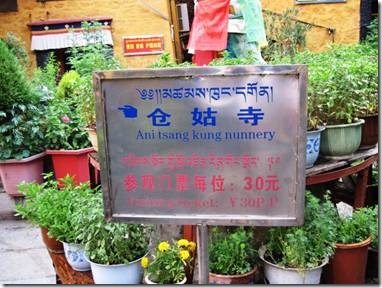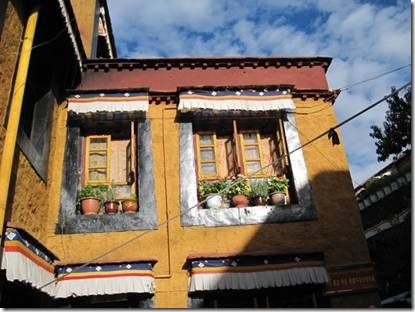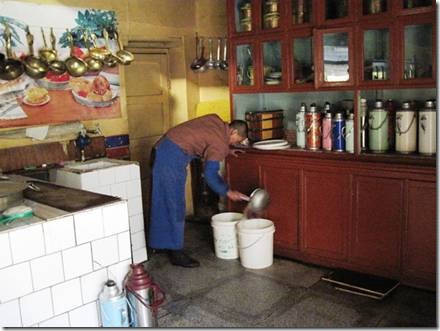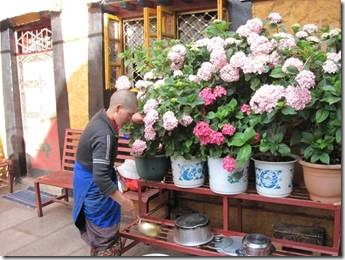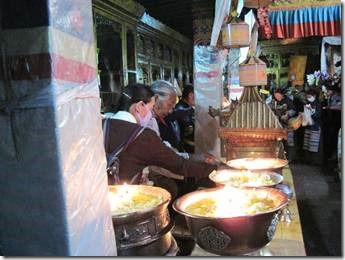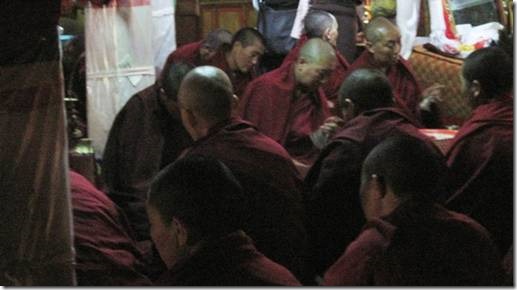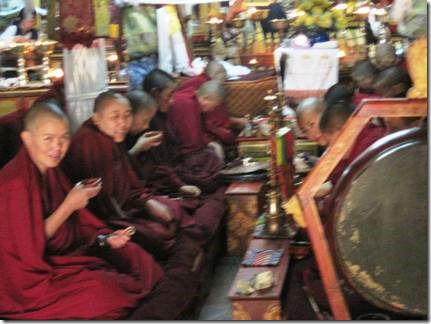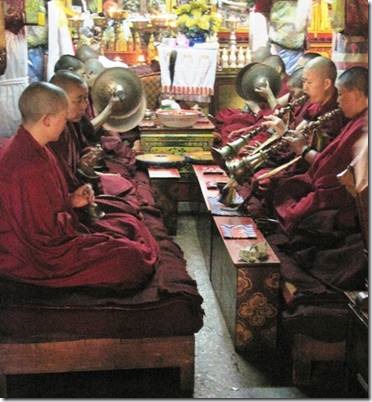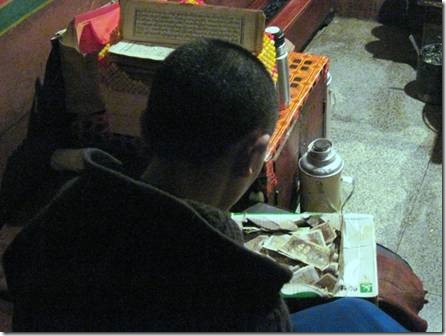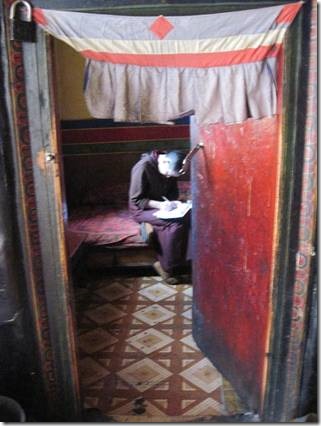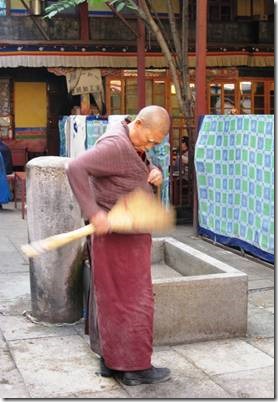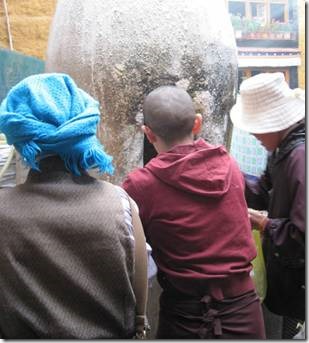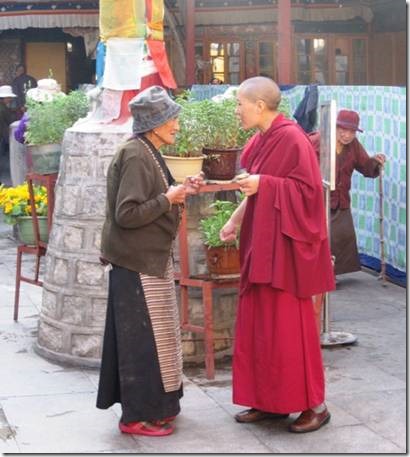Puteri Harbour Marina
Johor, Malaysia
Hi All,
I decided to jump ahead and write about our visit to the Ani tsang kung nunnery in the center of the old part of Lhasa. It was my favorite of the religious sites we visited. It was the smallest and the least opulent, but I was just charmed by the entire experience. I have so many photos from our short visit that I have to send it in 2 parts. The first email are photos of the nuns. The second part are photos of the Tibetan women who came to pray and interact with the nuns.
Ru
DoraMac
Tibet # 7 Ani tsang kung nunnery and Women of Lhasa Part 1
I was totally intrigued by the clothing of the Tibetan women and the beauty and character of their faces. And I was totally charmed by the Ani tsang kung nunnery. It was bright and lively and the nuns radiated intelligence, humor, friendliness and happiness. I had to be almost dragged away. Somehow, I thought there would be time to revisit but we didn’t. I’m quite sorry about that. We walked from our hotel to the nunnery located in the center of Old Lhasa. We turned into a small alleyway which opened into the courtyard of the nunnery.
The entry ticket spells the name of the nunnery Tsamkhung.
“Tsamkhung, located in the southeast of Jokhang temple is the only nunnery established in the old city of Lhasa. During the 7th century, Tibetan King Songtsan Gampa had been meditate in a natural cave at this site reciting prayers to pacify the dangers from the flood of Lhasa River. Thus the nunnery was named Tsamkhung which means the meditation cave. During the 12th century, Doctor Gewahum took meditation at this site. In the 15th century, Kujor Tokden, a Tsongkhapa’s close disciple started to establish the nunnery here. During the beginning of the 20th century, the venerable Lama Pabongka and Tampa Dhoedrak the ninetieth throne holder of Ganden Monastery enlarged the nunnery to the present site. It is one of the nunneries in Tibet that has gained certain prestige within and outside Tibet Autonomous Region.” Info from the entry ticket.
It was incredibly colorful in the clear morning light. There were several building in the compound which included housing for the nuns, a small tea restaurant, a small shop (where I wish I’d bought at least something) this kitchen and the main building housing the prayer rooms and initial “meditation cave.”
This room looked to be a small kitchen area.
I like the golden ladles hung over the picture of a table of food. At the nunnery we were allowed to take photos almost everywhere and there was no charge. At the Summer and Winter Palaces and monasteries either photos were forbidden or you had to pay to take them. From what I’ve read, Tibetan nuns aren’t treated as equals with the Tibetan monks and are often prohibited from higher levels of learning. Many of the nuns are now trying to change that and finding ways to higher levels of study.
A nun tends the profusion of flowers that enlivened the nunnery.
Inside the nunnery was dark and small and had many of the same Buddhist images we saw in the monasteries.
Here a woman looks to be adding a “butter offering” to one of the butter lamps in the prayer room.
Chanting nuns
This photo is a bit fuzzy but I like it because it captures the nuns’ curiosity and friendliness in their faces. Though allowed to take photos, we were advised against using a flash and the area where the nuns were sitting was actually quite dark with most of the light coming from the doorway. At the monasteries the monks just really seemed to ignore us so the warmth of the nuns was a lovely change. Also, we didn’t have to pay to take photos as we do in the monasteries.
Suddenly the chanting stopped and clashing symbols and horns and discordant music filled the small room.
A nun collects the small offerings left near the original “meditation cave.”
A nun’s story.
The room has so little. The covering over the door is to help keep out winter drafts.
A nun sweeps herself off.
The nuns often live in the simplest conditions. Hopefully this outside water tub isn’t the only source for washing.
Burning herbs in the large white stone oven at the nunnery.
I want to know these women!
I feel almost totally ignorant about the lives of Tibetan nuns though I have been doing some reading since we returned to the boat. It certainly makes me want to learn more and I will when I visit my local library in the fall. I’m especially glad to be learning about Ani, the nun in Last Seen In Lhasa.

